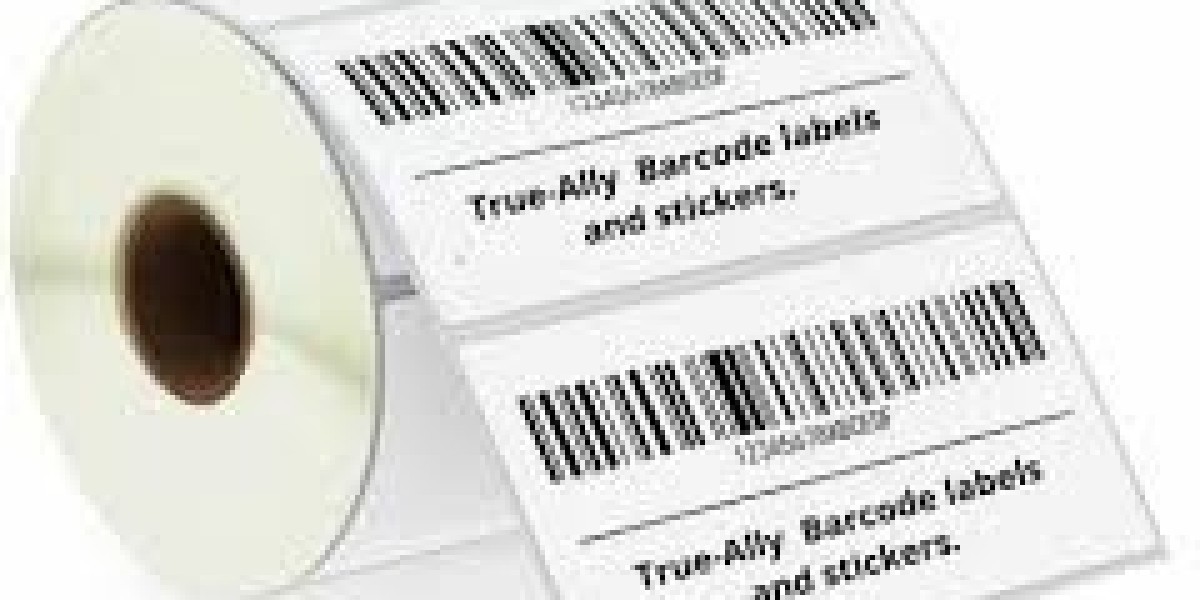Introduction
Printed barcode stickers play a crucial role in modern inventory management, retail operations, logistics, healthcare, and many other industries. These stickers simplify product identification, tracking, and pricing by encoding data in a machine-readable format. Whether you are running a small business or managing large-scale inventory, Printed barcode stickers offer a convenient and efficient solution for streamlining operations.
What Are Printed Barcode Stickers?
Printed barcode stickers are adhesive labels containing a barcode—a visual representation of data in the form of black and white bars. These stickers can be scanned using barcode scanners or mobile devices to retrieve information such as product details, pricing, and inventory status.
Barcodes are widely used in retail, warehousing, healthcare, and asset tracking due to their ability to provide quick and accurate data entry. The information encoded in a barcode can be linked to a database, ensuring seamless product management.
Types of Printed Barcode Stickers
There are different types of printed barcode stickers, categorized based on their material, barcode format, and printing method:
1. Types Based on Barcode Format
1D Barcodes (Linear Barcodes): These are traditional barcodes consisting of vertical lines. Examples include:
UPC (Universal Product Code) – Used in retail
Code 39 – Used in industrial applications
EAN (European Article Number) – Used for product labeling
Code 128 – Used in logistics and shipping
2D Barcodes (Matrix Barcodes): These store more data in a smaller space. Examples include:
QR Code – Used for marketing and digital payments
Data Matrix – Used in electronics and healthcare
PDF417 – Used for identification documents
2. Types Based on Material
Paper Barcode Stickers: Cost-effective and suitable for short-term use in retail, packaging, and shipping.
Polyester Barcode Stickers: Durable and resistant to water, chemicals, and extreme temperatures. Ideal for industrial applications.
Vinyl Barcode Stickers: Flexible and long-lasting, often used in outdoor environments.
Tamper-Evident Stickers: Designed to prevent fraud and unauthorized removal, commonly used in asset tracking and security.
3. Types Based on Printing Method
Thermal Transfer Printing: Uses a ribbon to transfer ink onto the sticker, resulting in long-lasting prints.
Direct Thermal Printing: Uses heat-sensitive paper to create barcodes without ink, ideal for short-term applications.
Laser Printing: Produces high-quality barcode labels, often used for high-volume printing.
Inkjet Printing: Suitable for quick, low-cost barcode sticker production.
Uses of Printed Barcode Stickers
Barcode stickers are used across various industries to enhance efficiency and accuracy. Here are some key applications:
1. Retail & Inventory Management
Price tagging and product identification
Stock tracking and replenishment
Preventing inventory loss and theft
2. Logistics & Warehousing
Tracking shipments and packages
Organizing warehouse storage
Managing supply chain operations
3. Healthcare
Patient identification and record management
Medication tracking
Laboratory sample labeling
4. Manufacturing & Asset Tracking
Tracking production stages
Managing tools and equipment
Ensuring product authenticity
5. Event Management & Ticketing
Issuing event tickets with barcode entry
Managing attendee data
Preventing ticket fraud
Benefits of Using Printed Barcode Stickers
The use of barcode stickers offers several advantages:
✔ Increased Efficiency: Barcodes allow for quick scanning and data retrieval, reducing manual work.
✔ Improved Accuracy: Eliminates human errors in data entry and inventory tracking.
✔ Cost-Effective: Reduces operational costs compared to manual tracking methods.
✔ Better Security: Helps in tracking and preventing loss or theft of items.
✔ Versatility: Can be applied to a wide range of industries and applications.
How to Print Barcode Stickers?
If you need printed barcode stickers for your business, you can either print them in-house or order from a professional printing service.
1. Printing In-House
To print barcode stickers yourself, you’ll need:
A barcode generator software (such as Adobe Illustrator, BarTender, or online barcode generators)
A barcode printer (thermal transfer or laser printer)
High-quality barcode label sheets or rolls
2. Ordering from a Printing Service
For large-scale needs, you can order custom barcode stickers from professional printing companies. These services offer:
Custom barcode sizes, materials, and adhesives
High-quality, durable prints
Bulk printing at competitive prices
Conclusion
Printed barcode stickers are an essential tool for businesses looking to improve operational efficiency and data accuracy. From retail and healthcare to logistics and manufacturing, they offer a simple yet powerful solution for tracking and managing assets. Whether you choose to print them yourself or order from a supplier, barcode stickers will enhance your workflow, reduce errors, and increase productivity.









